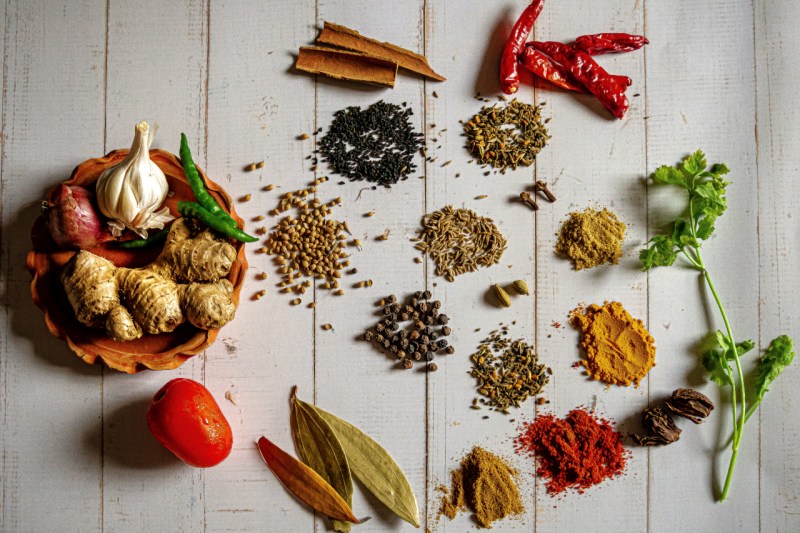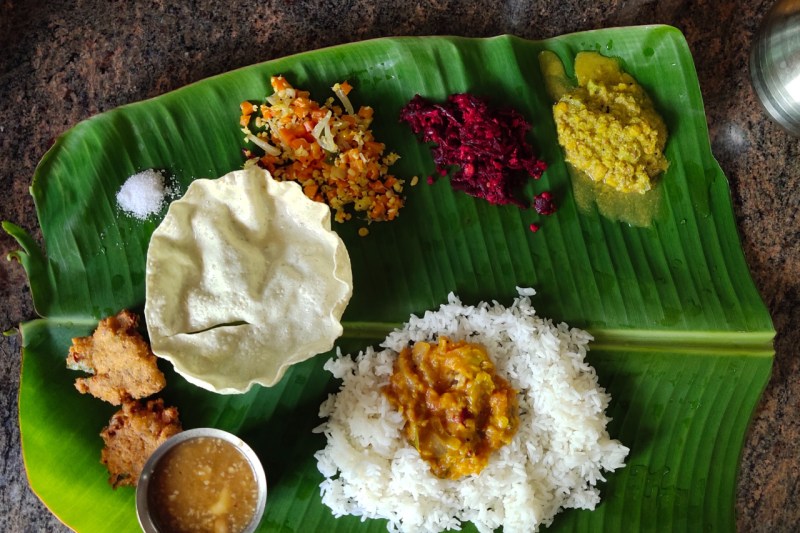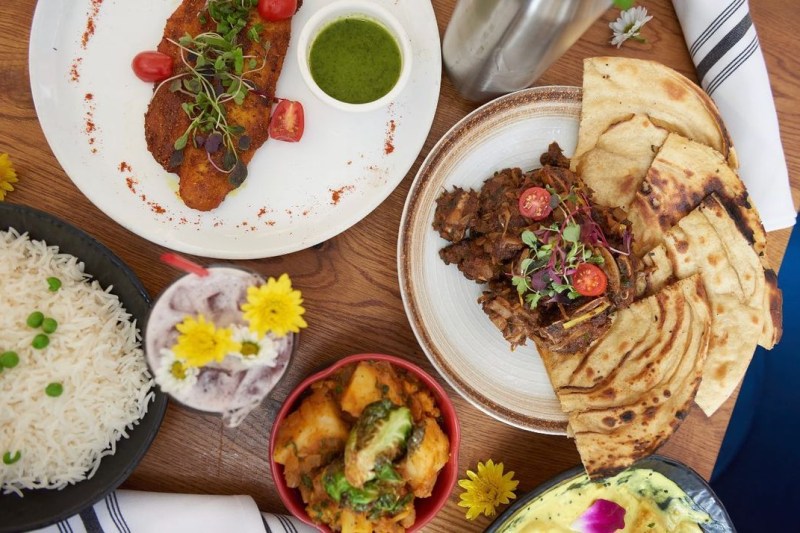India, the second-most populous country in the world, is home to one of the most dynamic cuisines in the world. A country with thousands of years of history, the origins of Hinduism, Buddhism, and countless languages and cultures, Indian cuisine is a vast subject. From the ghee and yogurt sauces of northern India to the fragrant, coconut-rich dishes of the south, Indian cuisine is incredibly diverse.
For this article, our expert is from Madam Ji, a modern Indian restaurant located in Manhattan’s Greenwich Village. Opened by chef and owner Abishek Sharma in summer 2020, Madam Ji desires to provide a new type of culinary experience for Indian cuisine. “Indian food is becoming much more widely accepted and is more accessible than ever which I think is amazing,” said Sharma. “It is no longer an “exotic” or “rare” encounter which means that people have higher expectations than ever.”
The Spices

It’s impossible to discuss Indian cuisine without diving into the role of spices in India. Spices for Indian dishes can range from fragrant to subtle or spicy, each playing a role in the final flavor. It’s also important to understand that curry powder does not exist in Indian cuisine. The creation of curry powder was a Western invention, although curry powder is also used in Japanese cuisine (Japanese curry was derived from a British interpretation of Indian cuisine).
Instead, the closest thing to Western curry powder in India is masala, a mixture of spices and herbs that can vary greatly by region and household. A good masala is what gives many Indian dishes their patented flavors. Creating a masala mix involves a variety of fresh spices contained in a masala dabba, a circular spice container filled with round stainless steel containers of powdered and whole spices. The creation of a great Indian dish is heavily dependent on the layering and balancing of these spices. Often, spices are dry roasted before cooking to release the full aroma and fragrance.
Regional and Religious Diversity

A common misconception is that all Indian cuisine is heavily spiced and rich. “I believe that Indian food is still misrepresented as heavy and overly spicy,” said Sharama. “But what people don’t see is the vast amount of fresh ingredients and layered mild spices that are incorporated into every dish.” In reality, there are many examples of Indian dishes that aren’t heavily spiced with chilis or rich with butter. Most Indian restaurants in America serve northern Indian food, which has a foundation of ghee (clarified butter), yoghurt, and wheat-based bread. But in other regions, such as the south or the coastlines, the use of coconut, mustard oil, and rice is more common. Although many dishes are spicy, every region in India will have items that range in spice level.
Many Indians are also vegetarian and that has a profound effect on the cuisine. Cuisine in India is heavily influenced by the countless religions in the country from Hindu vegetarians to non-pork eating Muslims and Jains, strict vegetarians that also don’t eat root vegetables and certain fruits. Even McDonalds is not immune to these influences — the beef patties in the Indian version of the Big Mac are replaced with chicken (called a Maharaja Mac).
A New Spin – Modern Indian Cuisine

This evolution and influence of modern sensibilities in Indian cuisine is not restricted to only fast food. At Madam Ji, Sharma is attempting to put a different spin on classic Indian flavors while still retaining aspects of tradition.
“At Madam Ji, we like to take traditional, nostalgic dishes and serve them with our interpretation of modern palates and style,” said Sharma. “We make sure that the traditional spices and flavors are not lost but are highlighted whether it is fusion or an elevated classic.”
Unlike the larger portions of traditional Indian items, Sharma offers smaller bites at Madam Ji with a modern, delicate presentation. These smaller bites enable guests to try multiple dishes, allowing for a more varied eating experience. The mixture of flavors can be quite unique at Madam Ji, such as the naan with goat cheese and samosas filled with American mac and cheese. Of course, not all of the dishes at Madam Ji are so contemporary. The array of tandoor roasted meat items at Madam Ji will taste familiar to any fan of classic Indian tandoori chicken or lamb, although the chops at Madam Ji comes delicately plated with an array of vegetables and a garnish of microgreens. There is a careful balance at Madam Ji of the modern with the traditional. Sharma has made an effort to include more classic dishes, such bone-in homestyle chicken curry slow-cooked with spices and onions and served with roti bread. An interesting element of Madam Ji is its cocktail and wine program. The majority of Indian restaurants in America do not offer curated, custom cocktails. Madam Ji has decided to challenge that narrative by creating several Indian-inspired cocktails.
Even the interior of Madam Ji represents something different, opting for a sleek, trendy vibe instead of the more formal look of a traditional Indian restaurant in America. All of this is leads to a combination of the old with the new, an evolution of Indian flavors. Yet, the foundation of Indian flavors is never neglected at Madam Ji. “We get creative with our ingredients while always making sure the Indian flavors are the star of the show,” said Sharma.



